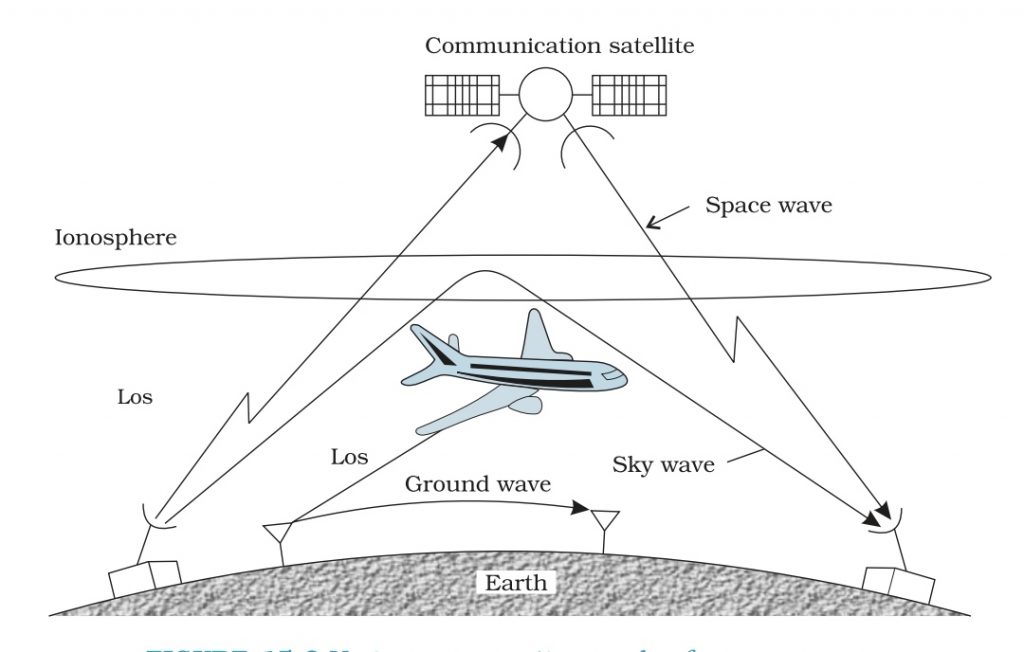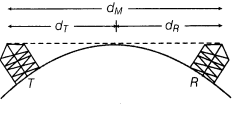Space waves propagation which is also known as tropospheric propagation or line of sight propagation is radio wave propagation within a given limit in the atmosphere.
A wave is a vibration in space and time that carries energy. Ocean waves, for example, are able to move large amounts of sand and rock from place to place. They can only do that because of the large amount of energy stored inside them.
Today we’re going to discuss the various ways that waves of different types can move and how those are different from each other.
Index
History
Radio propagation was first demonstrated by Heinrich Rudolf Hertz in the 1800s whereas electromagnetic wave propagation was originally predicted by Maxwell.
Let’s start our discussion by first looking at the definition of space wave propagation and then their types.
Space Wave Propagation Definition
Space wave propagation can be defined as the propagation of radio waves within 20 Km of the atmosphere. The frequency requirement is greater than 30 MHz (around 40 MHz ).
As you can see, the frequency is really high! Due to high frequency, the wavelength gets very narrow which causes these waves to travel in a straight path. These waves can easily penetrate through the ionosphere and troposphere so no scattering and reflection take place in these layers.

As discussed earlier, space waves (radio waves) propagate in a straight line. This does help us to devise a formula.
Calculation of Range of Transmission
Imagine a curved line that represents the curvature of our planet earth. There are two antennae placed (as shown below). One is the transmitting antenna and the other is the receiving antenna. Assuming the radius of Earth as “R”, we can find the range of transmission using a simple method.

Range of TV transmission, \(d = \sqrt{2hR}\)
Where,
\(d\) – Maximum Distance/Range of Transmission
\(h\) – Height of Antenna
\(R\) – Radius of the Earth
Range of line of sight distance between two antennas, \(d_m = d_r + d_R\)
\(d_m = \sqrt{2 h_t R} + \sqrt{2 h_r R}\)
where, \(h_t\) and \(h_r\), are the heights of transmitting and receiving antenna.
Applications of Space Wave Propagation
Following are the applications of space wave propagation
- Line-of-sight communication
- Radar communication
- Satellite communication
- Microwave linking
- Television broadcasting
Satellite Communication
If the communication takes place between any two earth stations through a satellite, then it is called satellite communication. In this communication, electromagnetic waves are used as carrier signals. These signals carry information such as voice, audio, video or any other data between ground and space and vice-versa.
Line of Sight Communication (LoS)
Space waves travel in a straight line from the transmitting antenna to the receiving antenna. Space waves are used for line-of-sight (LOS) communication as well as satellite communication. At frequencies above 40 MHz, communication is essentially limited to line-of-sight paths.
At these frequencies, the antennas are relatively smaller and can be placed at heights of many wavelengths above the ground. Because of the line-of-sight nature of propagation, direct waves get blocked at some point by the curvature of the earth as illustrated below.

If the signal is to be received beyond the horizon then the receiving antenna must be high enough to intercept the line-of-sight waves.
Let’s take a look at some interesting questions:
Practice Problem
Question. A transmitting antenna at the top of a tower has a height 32 m and the height of the receiving antenna is 50 m. What is the maximum distance between them for satisfactory communication in LoS mode? Given radius of earth 6.4 x 106 m.
Solution. Using the formula we discussed above, the range of transmission is,
\(d_{m} = \sqrt(2 × 64×10^5 × 32) + \sqrt(2 × 64×10^5 × 50) \, m\)
\(d_m = 64×10^2 × \sqrt{10} + 8×10^3 × \sqrt(10) \, m\)
\(d_m = 144×10^2 × \sqrt{10} \, m = 45.5 \, Km\)
FAQs
There are multiple ways with which electromagnetic waves can be produced. One of them is by accelerating a charged particle. Such waves are produced when electrical and magnetic fields coincide.
The electrical field, denoted as E, and magnetic field which is denoted by B, are always mutually perpendicular. As shown in figure below (Source),
They do travel in a straight line as you can see. An important point to note is that all EM waves travel at the speed of light (3 × 108m/s). In space, their velocity remains unaffected.
Radio Waves fall under the category of electromagnetic radiation. All EM radiation travels at the speed of light. Therefore, we can say that radio waves travel at the speed equal to 299,792,458m/s.
